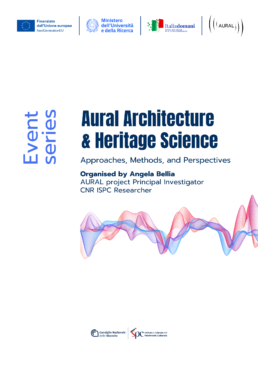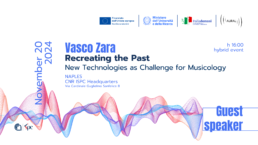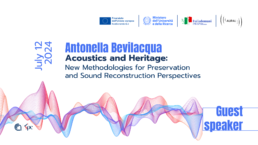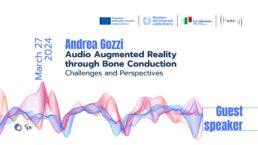Event series
Aural Architecture and Heritage Science
Approaches, Methods, and Perspectives
The application of digital technologies to heritage science has led to important methodological changes in the protection, preservation, and management of the acoustic features of architectural structures and performative spaces of the past.
By exploring the potential impact of digital techniques in the fields of acoustic engineers, heritage acoustics, architecture acoustics, sonic heritage, archaeoacoustics, soundscape archaeology, archaeomusicology, acoustic ecology, sound studies, anthropology of sound, and sensory studies, this event series aims to shed light on how digital methods and approaches can improve our knowledge on sounds and sound behavior in architectural structures, historical buildings, and archaeological sites, by promoting their modern reuse and sonic preservation.
Moreover, the goal of this event series is the analysis of the relationship between acoustics, architecture, sound, human behaviour, space, and environment as well as of the methods concerning anechoic recordings of music, sounds, and voices to be employed in the auralisation of ancient architectural structures and venues for sonic events and performances.
As part of the AURAL project, this event series also aims to explore whether digital architectural reconstruction, immersive audio-visual modes, and auralisation could enable us to understand the way sounds, music, voices, and body movements were experienced in the past and whether the links between form and function of ancient structures and historical buildings can shed light on the active properties of aural architecture and on performances in strengthening cultural and social identity.
This event series is organised by Angela Bellia, Principal Investigator of the AURAL project, CNR ISPC researcher.
To join the event series, we kindly ask you to register via CNR ISPC Eventbrite. Simply click on the 'Register Here' button below each event.




